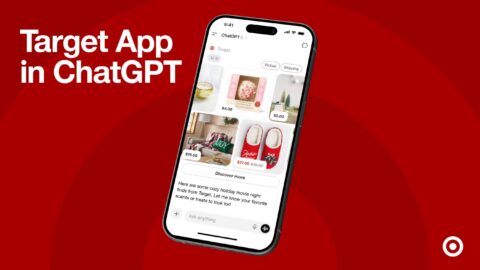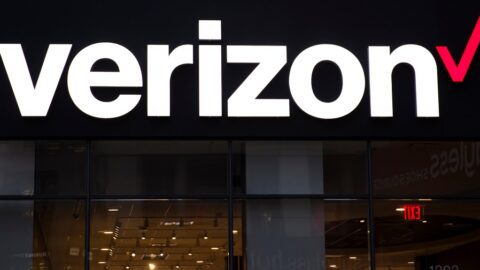Retailers are developing better messaging that discourages online shopping cart abandonment, a major concern in e-Commerce, and entices online shoppers to process their orders. The average abandonment rate jumped from 71% to 75% during the first six months of 2011 as more consumers utilized online carts to compare prices before making a purchasing decision, according to a recent cart abandonment study from Listrak, an email marketing solutions firm. Online shoppers also abandon their carts due to high or unexpected shipping costs and simple interruptions, among other factors, the study said.
Entitled “Shopping Cart Abandonment Practices of the Internet Retailer 1000 Companies,” the October 2011 study was created by Listrak to help retailers implement cart abandonment campaigns to improve order completion rates and identify trends as well as best practices. Listrak tapped the abandonment habits of the Top 1000 Internet Retailers then examined the point in the checkout process in which retailers request shoppers’ email addresses. It also looked at whether or not the payment information is located on the same page as the email option.
In addition, Listrak observed the cart abandonment campaigns utilized by retailers to convert shoppers into buyers. Defined as remarketing strategies, these campaigns help retailers trigger call-to-action responses from consumers who have abandoned their carts. The study noted the timing, offers, personalization and dynamic merchandising as well as the number of emails delivered during remarketing. Listrak found that close to 19% of Top 500 e-Tailers are recovering revenue and that more and more Top 500 retailers are implementing shopping cart abandonment strategies, the study reported. “Another interesting note is that the Second 500 are keeping up closely with the Top 500 with cart abandonment campaigns, an indication that this strategy is feasible and not just for the ‘big boys,’” the study noted.
Approximately 78% of all remarketing campaigns were sent with a single message, with the majority from the Top 500 (80%) and the Second 500 (75%). An increase of about 16% from the Internet Retailers 1000 that sent two email messages was noted in the report. “However, 10% of the Second 500 and only 3.3% of the Top 500 sent the all-important third message,” the report stated.

Timing of the messages, considered the most influential factor of successful shopping cart abandonment campaigns, greatly differed between the Top 500 and Second 500. About half (51%) of the Top 500 sent the first remarketing campaign within a day of the abandonment, while 73% of the Second 500 reached out in that timeframe, according to the report. But fewer initial messages were sent by the second group to online shoppers within an hour of abandonment than those sent from the Top 500.
“We’ve found that emails sent within one hour of abandonment have the highest open and click rates but emails sent three hours after the abandonment have the highest average order values,” said Megan Ouellet, Director of Marketing at Listrak and author of the study. “We’ve seen retailers double their campaign ROI simply by moving the first message deployment from 24 hours to three hours after the abandonment. The second message should be sent 24 to 48 hours later and the third message 48 to 72 hours afterwards. Waiting much longer gives customers the opportunity to purchase the items elsewhere.”
The report noted that 46% of the Second 500 sent the second message within 24 hours of the first, while fewer (39%) of the Top 500 did so in the same timeframe. For the third message, only 33% of the Top 500 sent the reminder within 72 hours of the second message while a majority of the Second 500 reached back in this timeframe.
E-Tailers are starting to implement discount offers into their shopping cart abandonment campaigns to help consumers make the purchase. Approximately half (49%) of online retailers will offer discounts in their initial messages. E-Tailers who plan to implement special offers in their remarketing campaigns are aware of the advantages, but these offers also can decrease profit margin, as mentioned in the report.
Personalized Messages Impact Response Rates
Many e-Tailers who have access to consumer analytics do not leverage it to create personalized email messages. Adding a personalized touch in campaigns, such as customer name or an image of the abandoned item, can trigger a call to action, the report noted. Despite the impact personalized messages have on consumers, only 27% of the first messages sent included the customer name or image in the email copy. ”In many cases, just seeing the items again is enough to prompt customers into completing their purchases, even without a discount,” said Ouellet. “You have the information, so use it.”
According to the report, most (98%) of the Top 1000 retailers believe sending remarketing campaigns should be used to capture customers’ email addresses on the first page of checkout, but 93% of these retailers actually use this approach. Ouellet recommends that online retailers seek email addresses during the checkout process prior to the actual purchase: “The further along in the process you request the information, the more chances customers have to abandon their carts,” she said. By capturing email addresses earlier in the checkout process, retailers can email online shoppers who have abandoned their shopping carts to offer incentives to revisit the e-Commerce site.
The study found that online retailers who utilize remarketing campaigns are capturing payment information differently: 16% of the Top 500 companies request payment information on the same page as the email address while 92% of the Second 500 request are doing so. The gap decreased among the Top 1000 e-Tailers who do not send remarketing campaigns; 29% of the Top 500 and 33% of the Second 500 request information on the same page, according to the report.
Additionally, Listrak found that retailers also used follow-up phone calls as a remarketing strategy for abandoned carts. Three phone calls were made within 1.5 hours of the abandonment, asking whether the online shopper had experienced any technical difficulties and offered to walk the shopper through the checkout process.
Also in October 2011, Listrak published its “Look Book,” a white paper critiquing 20 remarketing campaigns. “The [Internet Retailer 1000] email campaigns differ greatly in scope, strategy and design,” said Karen Nuss, Email Marketing Strategist for Listrak. “The white paper included a variety of the messages examined in our study, including [shopping cart abandonment] campaigns consisting of a single message; a single message with a follow up phone call from a customer service representative; two messages; three messages; and even five messages.”
The retailers mentioned in the “Look Book” white paper include:
- Barnes & Noble;
- Carters;
- Costco.com;
- Sears;
- Urban Outfitters; and
- Williams-Sonoma.
Each case study was divided into two sections: “Things We Love” and “Things We Would Test.” A few also included tips on how to maximize conversion rates and increase sales. Recommendations made by Ouellet and Nuss were based on the results discovered during frequent split-testing performed with Listrak clients. “We always recommend that companies split-test their shopping cart abandonment campaigns to find what works best for their customers; however, we have found some general best practices that are consistent across the board, such as call-to-action personalization, dynamic merchandising, branding and messaging,” noted the Look Book report.
To access the Listrak Shopping Cart Abandonment Study, click here.












